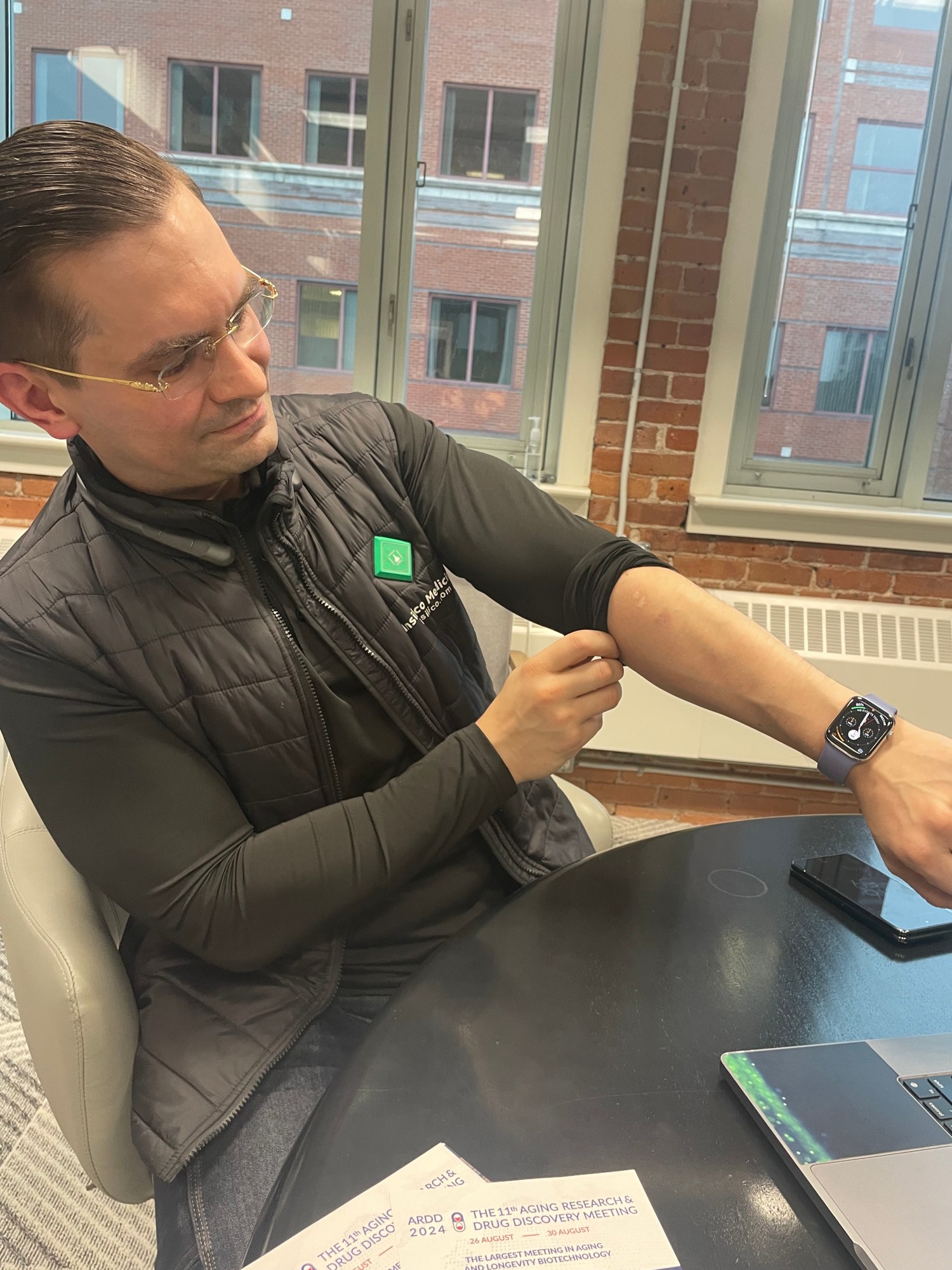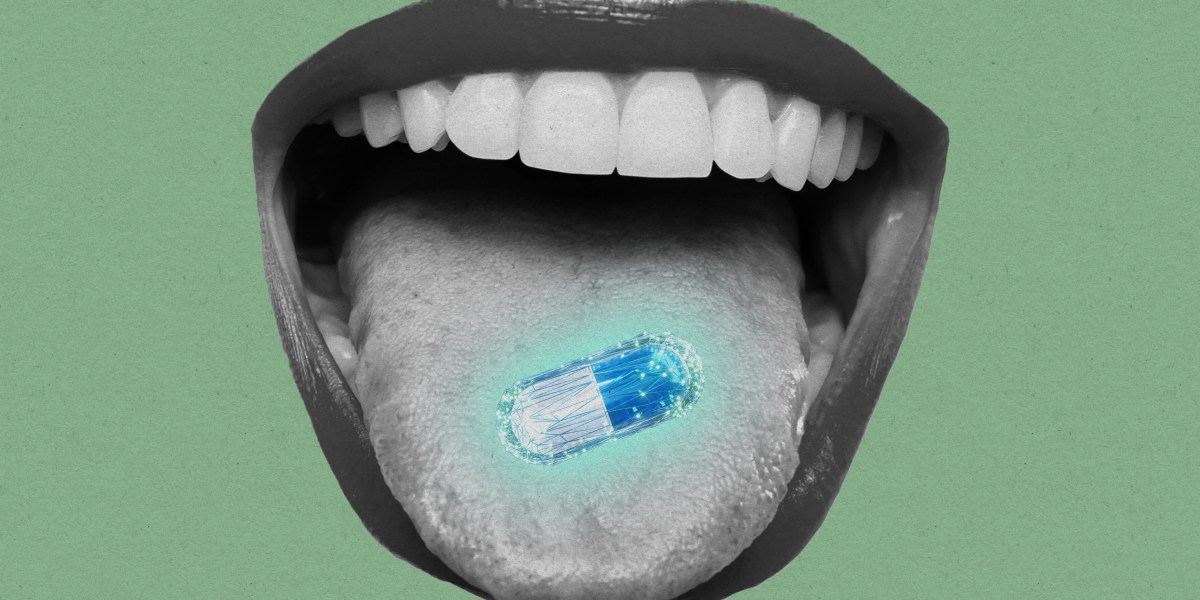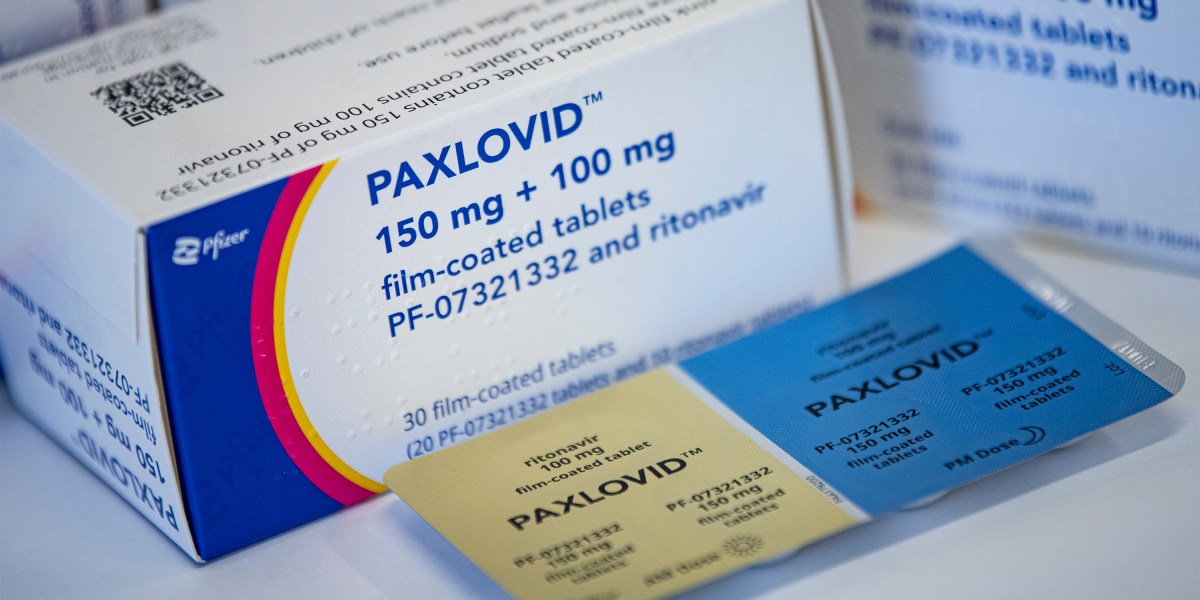A wave of drugs dreamed up by AI is on its way
Alex Zhavoronkov has been messing around with artificial intelligence for more than a decade. In 2016, the programmer and physicist was using AI to rank people by looks and sort through pictures of cats.
Now he says his company, Insilico Medicine, has created the first “true AI drug” that’s advanced to a test of whether it can cure a fatal lung condition in humans.
Zhavoronkov says his drug is special because AI software not only helped decide what target inside a cell to interact with, but also what the drug’s chemical structure should be.
Popular forms of AI can draw pictures and answer questions. But there’s a growing effort to get AI to dream up cures for awful diseases, too. That may be why Jensen Huang, president of Nvidia, which sells AI chips and servers, claimed in December that “digital biology” is going to be the “next amazing revolution” for AI.
“This is going to be flat out one of the biggest ones ever,” he said. “For the very first time in human history, biology has the opportunity to be engineering, not science.”
The hope for AI is that software can point researchers toward new treatments they’d never have thought of on their own. Like a chatbot that can give an outline for a term paper, AI could speed the initial phases of discovering new treatments by coming up with proposals for what targets to hit with drugs, and what those drugs might look like.
Zhavoronkov says both approaches were used to find Insilico’s drug candidate, whose fast progress—it took 18 months for the compound to be synthesized and complete testing in animals—is a demonstration that AI can make drug discovery faster. “Of course, it’s due to AI,” he says.
Mushroom cloud
Starting about 10 years ago, biotech saw a mushroom cloud of new startups promising to use AI to speed up drug searches, including names like Recursion Pharmaceuticals and, more recently, Isomorphic Labs, a spin-out of Google’s Deep Mind division.
Puffed up by prevailing hype around AI, these companies raised around $18 billion between 2012 and 2022, according to the Boston Consulting Group (BCG). Insilico, which remains private, and has operations in Taiwan and China, is financed with more than $400 million from private equity firm Warburg Pincus and Facebook cofounder Eduardo Saverin, among others.
The problem they are solving, however, is an old one. A recent report estimated that the world’s top drug companies are spending $6 billion on research and development for every new drug that enters the market, partly because most candidate drugs end up flopping. And the process usually takes at least 10 years.
Whether AI can really make that drug quest more efficient is still up in the air. Another study by BCG, from 2022, determined that “AI-native” biotechs (those which say AI is central to their research) were advancing an “impressive” wave of new drug ideas. The consultants counted 160 candidate chemicals being tested in cells or animals, and another 15 in early human tests.
The large tally suggests that computer-generated drugs could become common. What BCG couldn’t determine was if AI-enabled drugs were progressing more quickly than the conventional pace, even though they wrote that “one of the greatest hopes for AI-enabled drug discovery is …an acceleration of…timelines.” So far, there’s not enough data to say, since no AI drugs have completed the journey to approval.
What is true is that some computer-generated chemicals are selling for big figures. In 2022, a company called Nimbus sold a promising chemical to a Japanese drug giant for $4 billion. It had used computational approaches to design the compound, though not strictly AI (its software models the physics of how molecules bond together). And last year, Insilico sold a drug candidate initially proposed by AI to a larger company, Exelixis, for $80 million.
“It does show people are willing to pay a lot of money,” says Zhavoronkov. “Our job is to be a factory of drugs.”
24/7 CEO
Like any startup, the elbow grease put in by its founder may have something to do with his company’s results so far. Zhavoronkov, a Latvian and Canadian citizen who is co-CEO of the company, is a self-described “24/7” workaholic with a prolific record of scientific publications and whose company incessantly bombards journalists with press releases.
He finds time to write a blog at Forbes, often commenting on human life extension, which he describes as his ultimate interest. A recent post titled “The Kardashian of Longevity” explored the media presence of Bryan Johnson, an entrepreneur whose “open quest for personal longevity” included getting blood transfusions from his son.

Zhavoronkov also has skin in the game. During an interview, he pulled up his sleeve to reveal numerous scars—punch-hole marks left by giving his tissue for the manufacture of stem cells. He waved toward his waist. More scars there, he indicated.
“My only goal in life is to extend healthy, productive longevity. I am not married and don’t have kids,” he says. “I just do this.”
Zhavoronkov has a track record of implementing cutting-edge AI methods as soon as they’re available. He started Insilico in 2014, shortly after AI started to achieve new breakthroughs in image recognition with so-called deep-learning models. The new approach blew away prior techniques for classifying images and on tasks like finding cats in YouTube videos.
Zhavoronkov initially found notoriety—and some controversy—for AI apps that guessed people’s age and a program that ranked people by their looks. His beauty contest software, Beauty.AI, proved to be an early misstep into AI bias when it was criticized for picking few people with dark skin.
By 2016, though, his company was proposing a “generative” approach to imagining new drugs. Generative methods can create new data—like drawings, answers, or songs—based on examples they’ve been trained on, as is the case with Google’s Gemini app. Given a biological target, such as a protein, Zhavoronkov says, Insilico’s software, called Chemistry42, takes about 72 hours to propose chemicals that can interact with it. That software is also for sale and is in use by several large drug companies, he says.
Generative drug
On March 8, Insilico published a paper in Nature Biotechnology describing a candidate drug for a lung disease, idiopathic pulmonary fibrosis. The article detailed how AI software both suggested a possible target (a protein called TNIK) and several chemicals that could interfere with it, one of which was then tested in cells, animals, and ultimately in humans in initial safety tests.
Some observers called the paper a comprehensive demonstration of how to develop a drug candidate using AI. “This really does, from soup to nuts, the whole thing,” Timothy Cernak, an assistant professor of medicinal chemistry at the University of Michigan, told the publication Fierce Biotech.
The drug has since advanced to Phase II trials in China and the U.S., which will seek initial evidence of whether it’s actually helpful to patients with the lung disease, whose causes remain mysterious and which leads to death in a few years.
While Zhavoronkov claims the chemical is the first true AI drug to advance that far, and the first from a “generative” AI, the nebulous definition of AI makes his claim impossible to affirm. This summer, CNBC host Joe Kernen noted that, in the past, many companies set out to rationalize drug design using computers. “I don’t know where we went over the tipping point,” said Kernen. “We’ve been using computers for how many years? And when did we cross over this step of calling it AI?”
For example, a covid-19 vaccine approved in South Korea, called Skycovione, is packaged inside a nanoparticle that was designed “from the ground up” by a computer, according to David Baker, a researcher at the University of Washington, where it was initially developed.
Chris Gibson, CEO of Recursion Pharmaceuticals, also pushed back on Zhavoronkov’s claim, saying that AI has found its way into a number of drug quests that have advanced into Phase II, including five from his company, which has used AI to classify images of how cells respond to drugs. “This is one of many programs that have claimed to be ‘first’ over the last few years, depending on how you slice the use of AI,” he said on X. “AI can be used for many aspects of drug discovery.”
Some AI skeptics say coming up with candidate drugs isn’t the true bottleneck. That’s because the costliest setbacks often occur in later tests, if a drug doesn’t demonstrate benefits when tried on patients. And so far, AI is no guarantee against such failures. Last year, biotech Benevolent AI, based in the UK, laid off 180 people, half its staff, and cut back operations after its lead drug failed to help people with skin conditions. It had been touting an “AI-enabled drug discovery engine” that could predict “high confidence targets” and “improve the probability of clinical success.”
Now that he’s got a drug in human efficacy tests, Zhavoronkov agrees its origin in a computer probably won’t speed up what’s left of the journey. “It’s like a Tesla. The initial 0 to 60 is very fast, but after that you are moving at the speed of traffic,” he says. “And you can still fail.”
Zhavoronkov says his dream is for the drug program to keep advancing and demonstrate it can help lung patients, maybe even provide an antidote to the ravages of aging. “That is when you are a hero,” he says. “I don’t even want them to remember me for AI. I want to be remembered for the program.”




